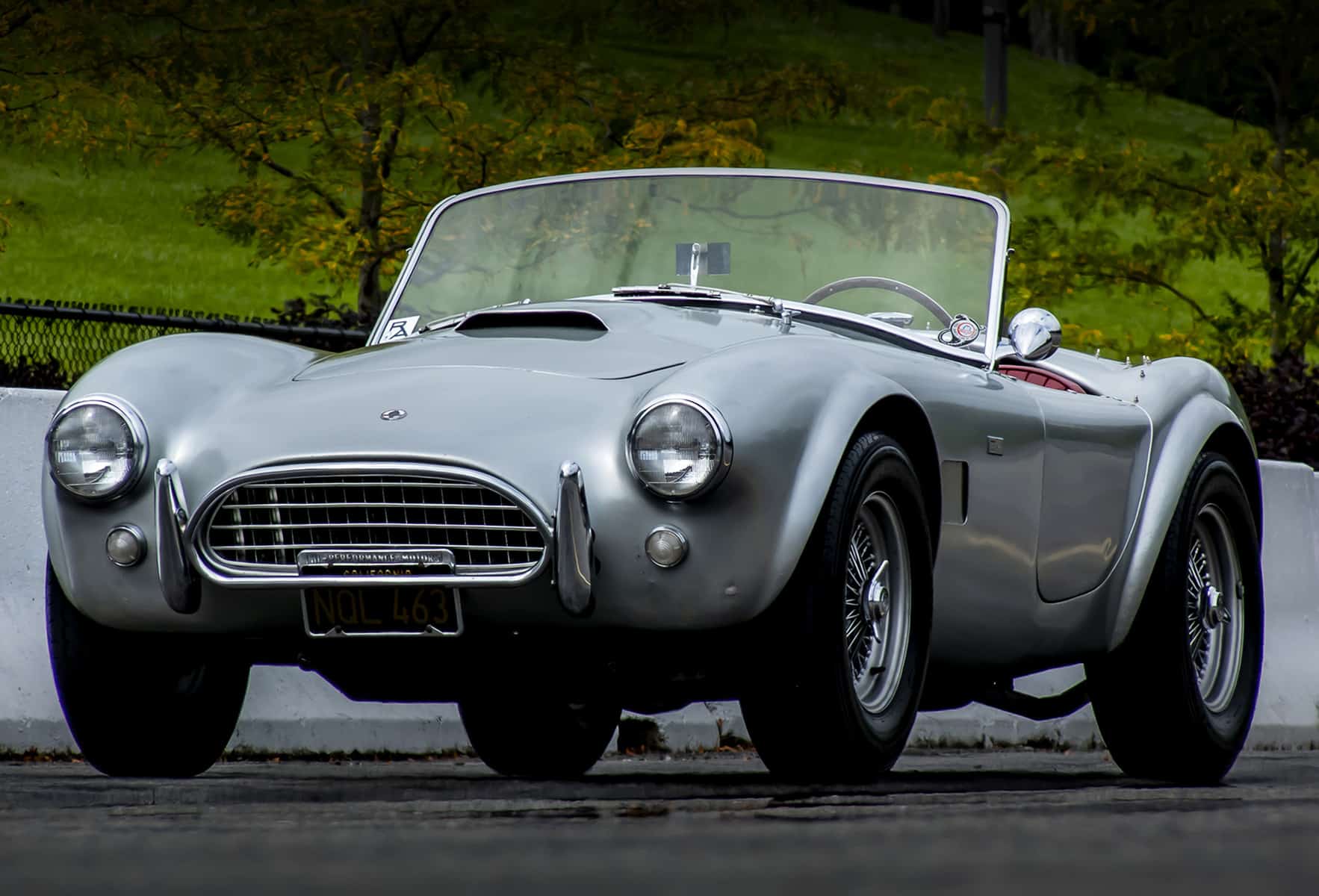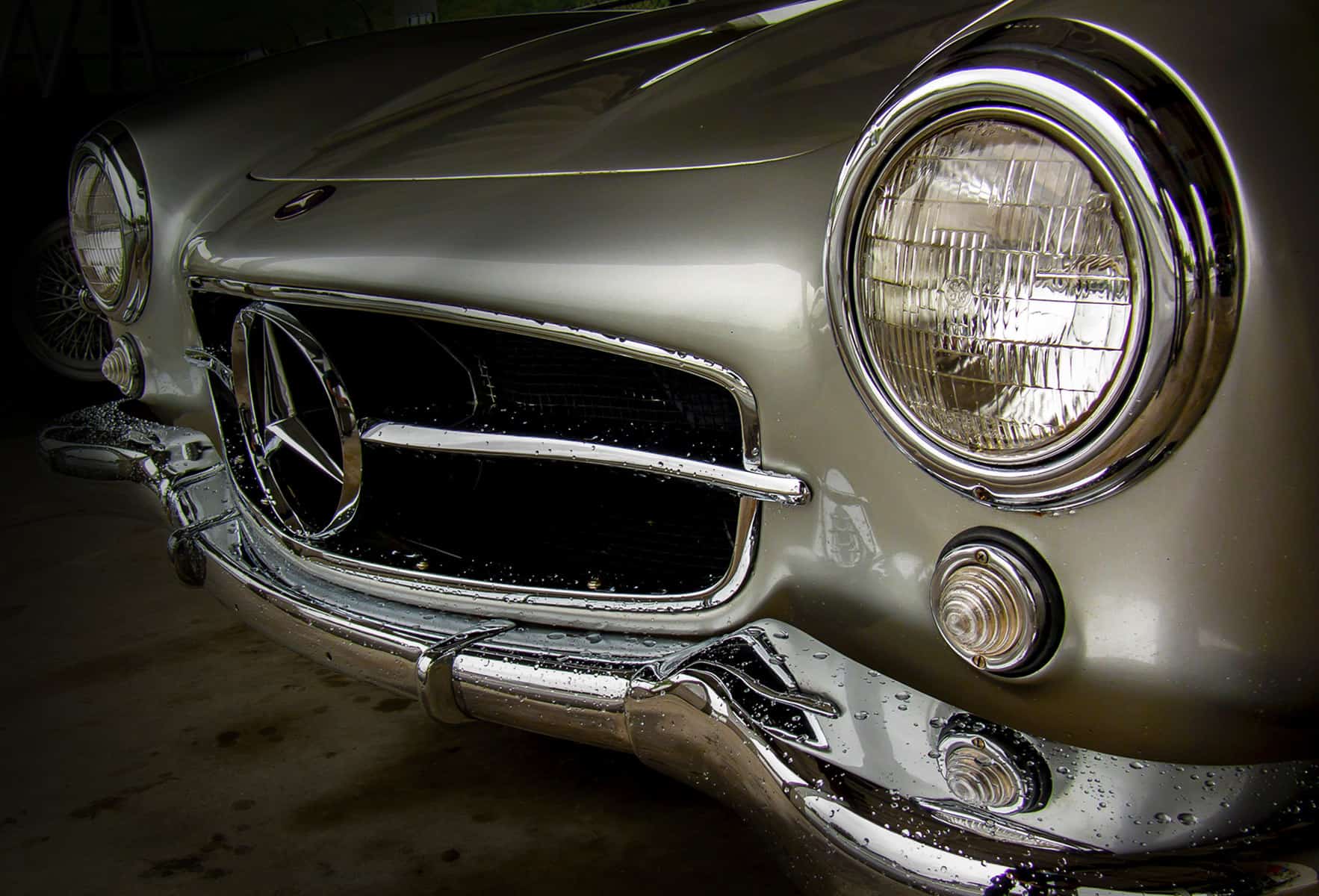
Shooting a “Grail Car” with Road & Track
Behind the scenes at R&T's photo shoot at Lime Rock
BY: ALEXANDER DAVIDIS
Some automobiles are endowed with incredible prowess while others enjoy historical significance. Some combine these attributes with breathtaking beauty. Such an extremely rare car is referred to by aficionados as a “Grail Car.”
A car that embodies complete perfection is kept and maintained in automotive “stables” and rarely if ever seen on the road – such extraordinary automotive thoroughbreds are too valuable. The custodians of such precious mechanical marvels welcome the opportunity to exercise them in their natural habitat from time to time.
Revs Institute was proud to take its 1995 McLaren F1 on the track for a photo shoot for Road & Track magazine, whose staff was testing eight iconic cars from almost the same number of decades, including the aforementioned F1.

The shoot took place at picturesque Lime Rock Park in northwestern Connecticut, which was closed for two days to allow R&T’s crew of editors and photographers time and space to work; graciously, they invited us to go behind the scenes.
While the F1—perhaps the ultimate street car of the twentieth century—was the king of the day, other motorcars offered enough to set hearts racing. Featured cars included a 1940s fully race-prepared MG T-Type, a mid-1950s Mercedes 300SL Gullwing, an original 1960s Shelby Cobra 289, a late ’60s Porsche 911S (though this particular 911 was a very early 1967), a 1980s BMW M5 E28, a late 1990s Acura Integra Type R, and a contemporary Mazda MX-5.

The weather looked grim before daybreak when the R&T crew rolled in trackside and some of the featured cars arrived. Fog and low clouds hung over the surrounding hills and it was drizzling. But then the big truck hauling the McLaren started to lower its tailgate and people seemed to forget about the weather.
The McLaren F1, built from 1992 to 1998, represents the pinnacle of twentieth-century automobile production – quite an achievement, considering that the car doesn’t have active suspension, four-wheel drive, power steering, or anti-lock brakes.

The sky stayed gloomy but the rain stopped and held off for the rest of the day. That gave the photographers the setting they needed to get the all-important car-to-car shots on the track. The editors readied themselves for their turns behind the wheels and black journals were prepared for each of the eight cars.
The writers then cycled through the cars and after each drive would pen their notes in one of the corresponding journals. The cars were driven more or less in chronological order, starting with the oldest. For those present, this outing was as if their birthdays and Christmas had fallen on the same day.

Unfortunately, the 300 Gullwing could not be taken out at a brisk speed. This car was in such original condition that it drove on its original forty-year-old tires. What’s more, this Mercedes was Sam Posey’s personal car, which he bought in 1958, two years before he could legally drive. He’s taken such good care of it that it’s never had to be restored.
To top things off, Sam showed up trackside to share with us some stories about this car and his racing career. He started as an amateur racer and in 1968 he graduated to Can Am and Trans Am racing for Roger Penske. Subsequently, he won the Lime Rock Trans Am. He continued to compete against other legends, including Parnelli Jones, Dan Gurney, and Mark Donohue. He raced Le Mans ten times, finishing in the top ten five times. He even had a go at the Formula 1 World Championship in 1971 and 1972.
Sam later became the racing commentator for ABC before moving to Speedvision. An accomplished artist, painter, and architect, he was very involved in the creation of Lime Rock Park. In 2016, Posey was inducted into the Motorsport Hall of Fame of America.

The second day of the shoot, the weather improved and at sunrise the McLaren was pulled out for photos in the morning light. Everybody was in high spirits because a properly dried-out track meant the editors would finally all have a go in the Grail Car, the ultimate experience for any serious car enthusiast.
The engineering underlying this spectacular car — a product of McLaren’s long motorsport experience — was a combination of super-low weight and sophisticated aerodynamics combined with a 600-horsepower, naturally aspired engine. Weight-wise, the F1’s monocoque hull is made entirely of carbon fiber. To keep the car glued to the road, a full ground-effect undertray makes outlandish spoilers obsolete. All of which significantly contributes to the McLaren’s flawless design and beautiful lines. The driver has a central position (providing visibility far superior to that of a conventional layout) and can take two passengers on either side, plus luggage.

McLaren’s F1 was the first ever “street car” to unseat Ferrari, Lamborghini, Bugatti, Porsche, Jaguar, and Aston Martin. While these companies had started to build what was then known as “supercars”, McLaren built the first “hyper car.” With an ultimate possible top speed of 243 mph and 0-60 acceleration of 3.2 seconds, the F1 flew past any other car on the road. While the car was designed for the road and not the track (unlike all previous McLarens), it nevertheless won multiple races, including Le Mans in 1995 while competing against purpose-built prototype race cars. Today, the F1 remains the fastest naturally aspirated hyper car in the world, as the cars that have surpassed it in terms of top speed all use forced-induction engines.
Twenty-five years on, only the naturally aspirated Aston Martin Valkyrie and the naturally aspirated Gordon Murray T50 (also designed by Gordon Murray) may rival the F1, but the Valkyrie has not been independently performance tested, and the T50 is not even street ready.

To get behind the scenes at Road & Track’s car test was a truly insightful, unforgettable experience. Look for the feature story in Road & Track this October.
As the second day wound down, Sam Posey returned to the track for shots of the man and his car on “his” straight.




